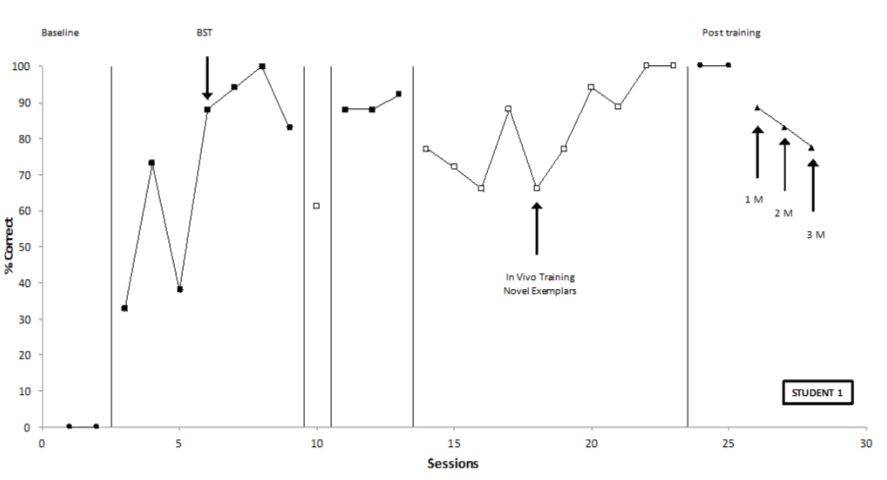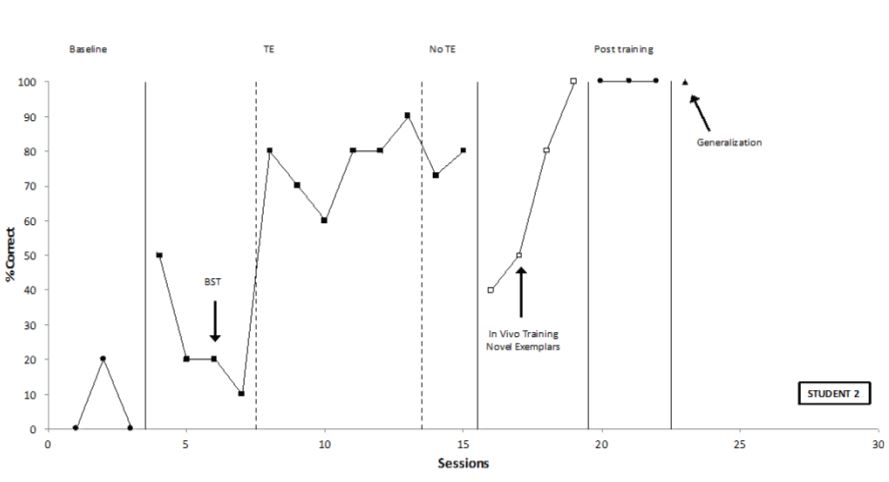Teaching Students with ASD to Respond to Irony: A Clinical Evaluation and Molecular Analysis
Daniele Rizzi, Alessandro Di Bari, Erica Scandurra
Associazione ALBA Onlus – Pescara – ITALY
Introduction
Understanding irony, sarcasm, or complex forms of verbal behavior is often a barrier for children with ASD (Filippova et al., 2008).
Responding to the literal meaning of an ironic comment may have negative implication on social functioning (Persicke et al., 2013).
Persicke et al. (2013) used rules and in vivo multiple exemplars training to teach to three children with ASD to detect and respond appropriately to sarcastic statements. The authors explained their findings based on Relational Frame Theory (RFT).
The purpose of the current study is to conduct a clinical evaluation of a teaching procedure based on Behavioral Skill Training (BST), in vivo training, and multiple exemplars training to teach two children with ASD listener behavior in response to ironic statements, and provide a tentative discussion of findings and learning processes within a Radical Behaviorism conceptual frame.
Method
Participant and Setting:
- 2 male students: 9 and 14 years old.
- Each student exhibited inappropriate responses to ironic or sarcastic statements
- Both students could engage in an average of 3 or 10 conversational exchanges and had previously acquired different kinds of complex verbal behavior.
- All data were obtained during home-based 1:1 therapy and during generalization probes.
Data Collection:
- Dependent Variable: percentage of correct responses to ironic or unironic comments.
- Correct response defined as laughing, smiling, or responding with an ironic comment.
- Incorrect response defined as responding to the literal meaning or not responding.


Procedures
Baseline:
- 3 or 5 ironic comments and 1 unironic comment. No feedback was provided.
BST:
- 10 to 15 ironic comments per session with randomized unironic comments
- Used Instructions, Modeling, Role Playing and Feedback
BST plus Token Economy (TE):
- Only for Student 2 TE introduced between session 5 and 11
IN VIVO training:
- 10 to 15 ironic comments presented in the natural environment during typical conversations or interaction.
- Sessions were presented in different environments (e.g. school, community)
- For Student 1 some sessions were run by family members to program for generalization
Post Training:
- Sessions and comments were the same as baseline.
- For Student 1 maintenance sessions were conducted after 1,2 and 3 months
- For Student 2 one generalization session was run by his mother
Results
Both Students acquired appropriate responses to ironic comments.
For Student 1 there was a procedural error after session 9, and he moved from the BST condition to the IN VIVO condition prematurely. To rectify the error he was moved back to the BST condition until responding was stable before moving to the IN VIVO condition again.
Sessions 21 and 22 were conducted by family member to promote generalization.
Student 1 responded correctly to 100% of the comments in post-training phase and with a decreasing trend during maintenance probes after 1, 2 and 3 months.
For Student 2 we added a token economy to increase responding during BST.
Student 2 responded correctly to 100% of the comments in post-training phase and during generalization probes.
Both student learned to make ironic statements as speaker without direct training, in novel contexts and with novel people.
Discussion
Results are similar to Persicke et al (2013) in teaching listener behavior in response to ironic statements
Results suggest the effectiveness of behavioral procedures in teaching complex topographies of verbal behavior to people with ASD
A first attempt to use a Radical Behaviorism account to explain the response to irony is to define the response as controlled by the absence of joint control (Lowenkron, 1984) between the verbal behavior of the speaker (the ironic comment) and the environmental stimuli that contact listener’s senses
In responding to a sincere comment (a comment that accurately describe an environmental stimulus) the speaker may have the tendency to emit (more probably covertly) an echoic response of the speaker’s verbal behavior and an accurate description of the environment as a tact of the non verbal stimulus
In this case joint control (e.g. saltation in response strength) may be the discriminative stimulus signaling the availability of reinforcement for responding to the speaker’s verbal behavior as an accurate statement
Conversely, in responding to an ironic statement, the listener will still have the tendency to emit an echoic response of the speaker’s verbal behavior, but to tact the non verbal stimulus with a different topography respect to the echoic response, because the non verbal stimulus may not be present or be different
In this case the absence of joint control (e.g. absence in saltation in response strength) may be the discriminative stimulus signaling the availability of reinforcement for responding to the speaker’s verbal behavior as an ironic statement
While convergent stimulus control may explain responses to the presence or absence of joint control between the verbal and non verbal stimuli, divergent stimulus control may explain responses to different “gradations” of absence of joint control
In response to a speaker’s statement, a listener is affected by at least 2 stimulus conditions: non verbal stimuli (e.g. a warm sunny day) and a verbal statement (e.g. “it is going to snow today”)
Each of the stimulus conditions increases the strength of a class of responses on the side of the listener
In an ironic statements the two stimulus conditions may evoke incompatible responses. A warm sunny day may evoke to take off your shirt, while the statements “It’s going to snow today” may evoke a tendency to put on a jacket (Palmer, personal communication, 2015)
Further analysis should account for the role of prosody, autoclitics and other kinds of non verbal behavior (e.g. facial expressions, gestures) in controlling these kind of responses, as well as should analyze the role of a past history of reinforcement or punishment on the side of the listener for responding to ironic statements
